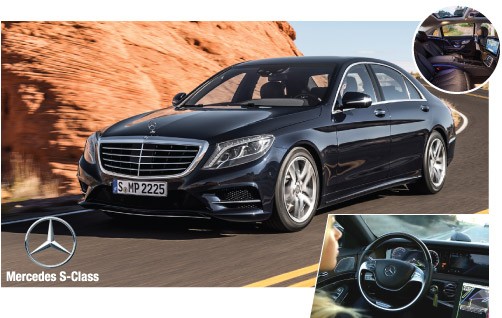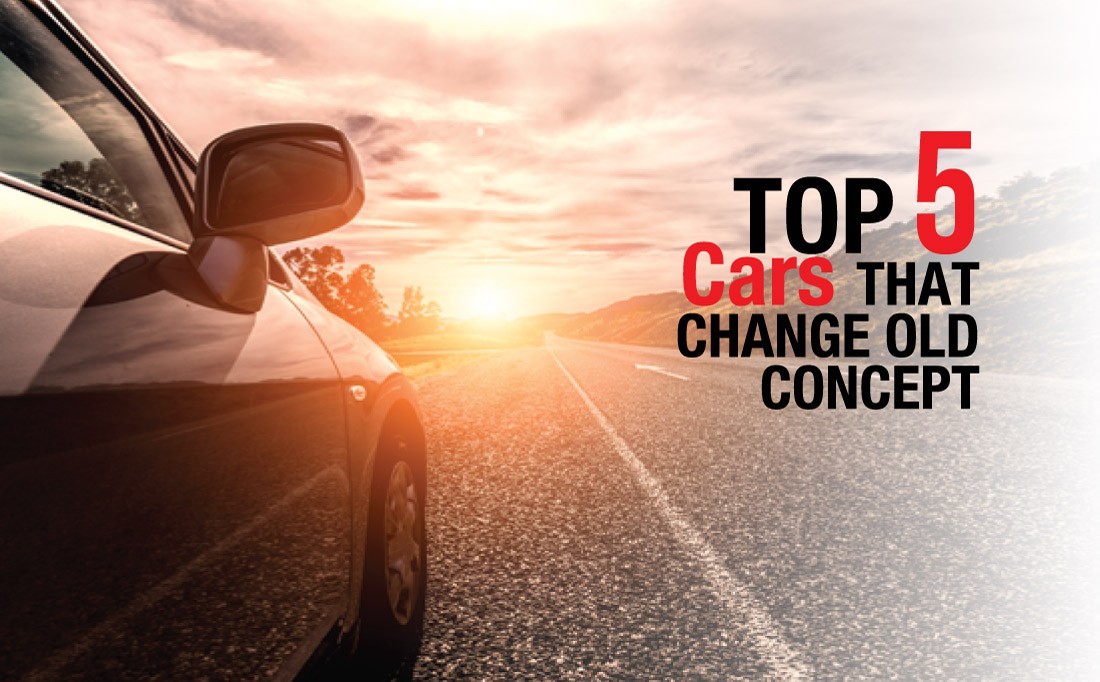TOP 5 CARS THAT CHANGE OLD CONCEPT
An autonomous car is a vehicle that can guide itself without human conduction. With concrete reality it may pave the way for future systems where computers take over the art of driving.
They’re classified by levels, zero through five. Zero and one are what most cars on the road are today. The driver is in control of everything, or there’s one thing controlled by the car (think cruise control). Level 2 is where most semi-autonomous cars land today. Drivers might not have to control the accelerator, brakes, or steering all the time, but they still need to be fully alert. Level 3 is when the car begins to take over most functions. Level 4 is when the car controls everything most of the time. Finally, Level 5 is the point where driver controls become irrelevant. The car is well and truly in charge. So now we are at the cusp of Level 3 and that cars of the future are here.
Tesla Model S
 Tesla, after ground-breaking of EV technology, is the industry leader in autonomous tech introduced in 2014. Autopilot of this car is constantly being modernized and uses cameras, radar, and acoustic sensors to cover 360 degrees around the car. Now autopilot-equipped Teslas, in its second generation, can even change lanes by themselves. Although this is the most advanced system on the market, the company warns that drivers shouldn’t completely turn driving duties over to their cars yet. They might be closer, but they aren’t fully autonomous yet.
Tesla, after ground-breaking of EV technology, is the industry leader in autonomous tech introduced in 2014. Autopilot of this car is constantly being modernized and uses cameras, radar, and acoustic sensors to cover 360 degrees around the car. Now autopilot-equipped Teslas, in its second generation, can even change lanes by themselves. Although this is the most advanced system on the market, the company warns that drivers shouldn’t completely turn driving duties over to their cars yet. They might be closer, but they aren’t fully autonomous yet.
Mercedes S-Class
 Although Tesla’s autopilot gets a lot of press, Mercedes-Benz isn’t far behind. The Mercedes S-Class with its Intelligence Drive system, can use its adaptive cruise control, lane keep assist, and hands-free steering to drive itself for up to 12 seconds at a time. After that, the car sternly reminds the driver to put their hands back on the wheel with a red warning light and reminder tone.
Although Tesla’s autopilot gets a lot of press, Mercedes-Benz isn’t far behind. The Mercedes S-Class with its Intelligence Drive system, can use its adaptive cruise control, lane keep assist, and hands-free steering to drive itself for up to 12 seconds at a time. After that, the car sternly reminds the driver to put their hands back on the wheel with a red warning light and reminder tone.
BMW 7-Series
 Having autonomous features inside and out, BMW has got its extra praise smartly. A buyer can opt for the Active Driving Assistant Plus packages that utilize an array of sensors for the car to pragmatically drive itself with the modern 7-Series. Inside the 7 Series, a number of functions are controlled by BMW’s Gesture Control, meaning the days of you having to control the radio or climate control system with a button are over.The 7 Series’ final party trick is a self-parking function. Controlled by the car’s key fob, BMW’s flagship sedan can pull into and out of a parking spot by itself, allowing you to park it in a tight space and not have to worry about putting any dings in those big doors.
Having autonomous features inside and out, BMW has got its extra praise smartly. A buyer can opt for the Active Driving Assistant Plus packages that utilize an array of sensors for the car to pragmatically drive itself with the modern 7-Series. Inside the 7 Series, a number of functions are controlled by BMW’s Gesture Control, meaning the days of you having to control the radio or climate control system with a button are over.The 7 Series’ final party trick is a self-parking function. Controlled by the car’s key fob, BMW’s flagship sedan can pull into and out of a parking spot by itself, allowing you to park it in a tight space and not have to worry about putting any dings in those big doors.
Audi A8
 The mesmerizing slogan of Audi “VorsprungdurchTechnik” means “Truth in Engineering” that made the German brand a leader in self-driving technology. Its A8 flagship promises to be a near-autonomous powerhouse for 2018. Using a combination of LIDAR (think radar, with lasers), an array of cameras, and other sensors, Audi demands the A8 will be the world’s first Level 3 autonomous car, with the ability to drive itself at speeds up to 60 kilometers an hour
The mesmerizing slogan of Audi “VorsprungdurchTechnik” means “Truth in Engineering” that made the German brand a leader in self-driving technology. Its A8 flagship promises to be a near-autonomous powerhouse for 2018. Using a combination of LIDAR (think radar, with lasers), an array of cameras, and other sensors, Audi demands the A8 will be the world’s first Level 3 autonomous car, with the ability to drive itself at speeds up to 60 kilometers an hour
Volvo S90
 When the world is evolving at breakneck pace in automotive era, Volvo is swiftly positioning itself to be at the vanguard. Whether that means betting big on electric power or self-driving cars, the Swedish-Chinese brand is quickly moving into a leadership role. Volvo, this year, launched the “Drive Me” program in its hometown of Gothenburg, Sweden. This is a pilot program that allows average citizens to use autonomous vehicles in everyday traffic. Until the rest of the world catches up, Volvo’s XC90, S90, and V90 all featured system, which offers steering, speed, and braking inputs while under the supervision of the drive
When the world is evolving at breakneck pace in automotive era, Volvo is swiftly positioning itself to be at the vanguard. Whether that means betting big on electric power or self-driving cars, the Swedish-Chinese brand is quickly moving into a leadership role. Volvo, this year, launched the “Drive Me” program in its hometown of Gothenburg, Sweden. This is a pilot program that allows average citizens to use autonomous vehicles in everyday traffic. Until the rest of the world catches up, Volvo’s XC90, S90, and V90 all featured system, which offers steering, speed, and braking inputs while under the supervision of the drive


